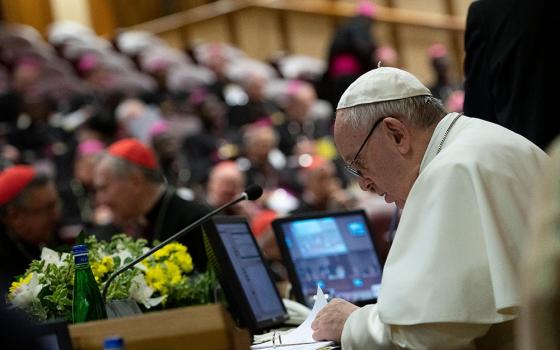Last summer, Congressman Paul Ryan, long seen as the Republicans’ point man on budget matters gave a talk at the American Enterprise Institute on the need to combat poverty. Many on the left criticized him, often unfairly, but some of us insisted that his ideas be given a hearing, and praised him for at least trying to focus our nation’s politics on issues related to poverty. Well, it turns out that he was just joking after all.
Yesterday, the new chairman of the House Budget Committee, Congressman Tom Price, released the Republicans’ budget proposal for the year and, as Dana Milbank notes in this morning’s Washington Post, it “was altogether fitting that Republicans rolled out their budget during a festival of inebriation” that is St. Patrick’s Day. It is true that Rep. Ryan, who also ran as the party’s vice presidential nominee in 2012, now leads the House Ways and Means Committee, but this budget surely had to get a thumbs up from him and other GOP leaders.
Milbank goes on to note some of the more laughable accounting gimmicks in the GOP budget proposal. For example, they predict the repeal of Obamacare will yield a substantial windfall, but they also count some of the revenues Obamacare generates. The new “dynamic scoring” method of accounting yields an additional $147 billion over ten years. It assumes that current tax cuts will expire as scheduled, even though no one believes those cuts will be permitted to expire, least of all with Republicans in charge, yielding an additional $900 billion. Voila – pretty soon, you get to a balanced budget by 2025. Now, Cong. Price will saw Nancy Pelosi in half.
The most egregious of the gimmicks has already run into trouble with Senate Republicans. The House plan strikes a balance between deficit hawks who like the cuts in Pentagon spending forced by sequestration and the defense hawks who have never met a weapons system they did not want to fund. By placing almost $100 billion in defense spending in the account labeled “Overseas Contingency Operations,” the new budget squares the circle: Because those funds are marked “contingency” they do not count on the overall budget balance sheet. Senate Republicans have already flagged that as a non-starter.
Gimmicks or no gimmicks, the part of the GOP budget proposal that has the best chance of passing is the part that slashes programs that help the poor. The largest single item on the slash list is the repeal of Obamacare which the GOP predicts will save $2 trillion. Of course, there is no guarantee the GOP will be able to repeal Obamacare and it seems an odd proposal at a time when the law has not only slowed inflation in the health care industry but has reduced the rate of Americans who are not insured by 35%, the largest such reduction since the introduction of Medicare and Medicaid in the 1960s. Those who are now benefiting from such insurance include the working poor who now have access to Medicaid or affordable private insurance.
Speaking of Medicaid, the GOP plans to turn that into a block grant to the states, which they believe will yield an additional $900 billion. Except, if the terms of use for Medicare remain the same, that $900 billion expense will pass to the states, or the terms of use will be slashed and more poor people will be without insurance.
The House proposal claims it will slash an additional $800 billion from non-defense discretionary spending. Robert Greenstein, President of the Center on Budget and Policy Priorities, issued a statement saying:
The plan would slash these programs by $759 billion below the already damaging sequestration levels. Under sequestration alone, non-defense discretionary funding is slated to tie an all-time record low in 2016, measured as a share of gross domestic product (GDP) in data that go back to 1962, and then to set new record lows in 2017 and every year thereafter. Yet the House budget cuts $759 billion below those levels — with dangerous implications for education, job training, early intervention programs for children, basic scientific and medical research, and transportation, all of which are important for productivity gains and long-term economic growth. By 2025, total funding for non-defense discretionary programs would be 33 percent below the 2010 level adjusted for inflation.
This part of the proposal is very bad, but at least it has some degree of specificity. The GOP plan also calls for $1.1 trillion in cuts to non-Social Security and non-health related entitlements, which would include programs like SNAP, better known as food stamps. So much for helping the poor. After all, we can’t afford it in a budget that includes no new revenue even though study after study indicates that the wealthiest Americans continue to reap almost the entire gains in national income for themselves.
It is clear that this budget will never be adopted as is. Even Cong. Price hedged his bets on that. The difficulty is that negotiations have to start somewhere and this is the blueprint where they will start. It is tilted so far to the right, even when it gets pulled back to the center, it will remain very far to the right. I am reminded of a quip that President Reagan once made: “In my administration,” he said, “the right hand does not know what the far right hand is doing.” And, President Obama, following a bipartisan tradition going back at least to the Reagan years, has never submitted a budget proposal that was any more real than yesterday House GOP plan.
You know: We pay these folks. True, the choices we face in charting a more solvent fiscal future for the government are not easy, given all the gimmicks that have gone before and the nation’s addiction to deficit spending. But, they only get worse if we delay confronting them. And, when things get really bad, it is always the poor who will suffer the most. If Cong. Ryan was serious about confronting poverty, he has his work cut out for him, and he needs to start with his fellow GOP chairmen.




